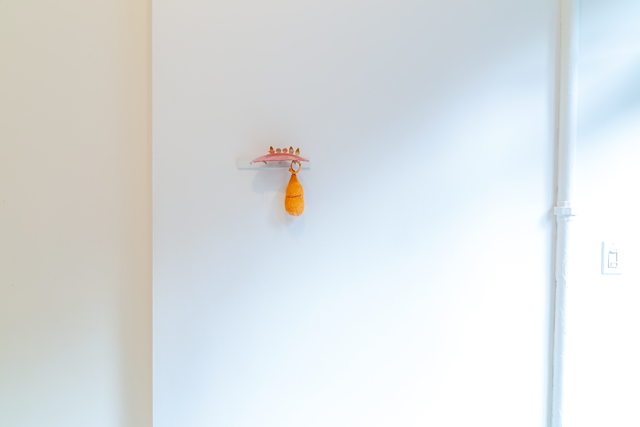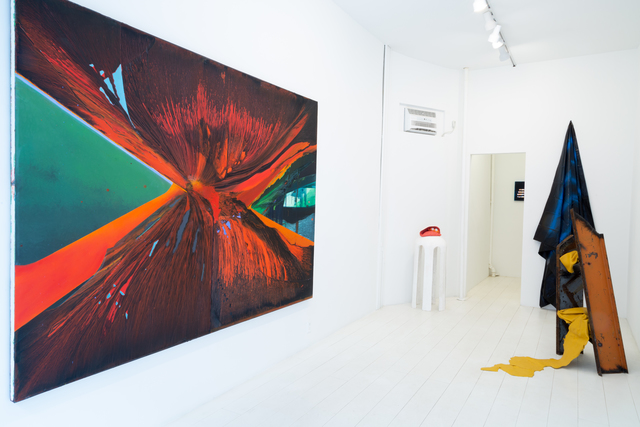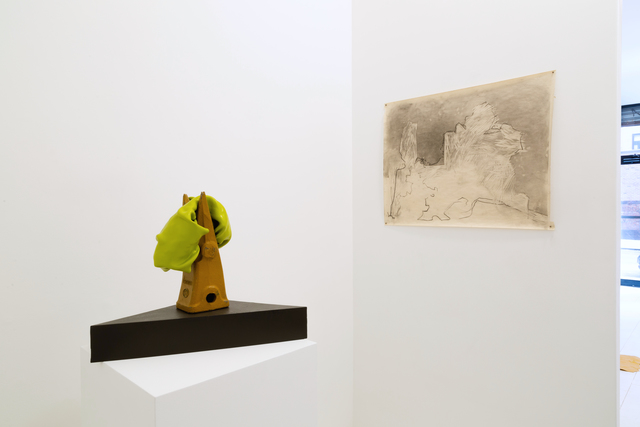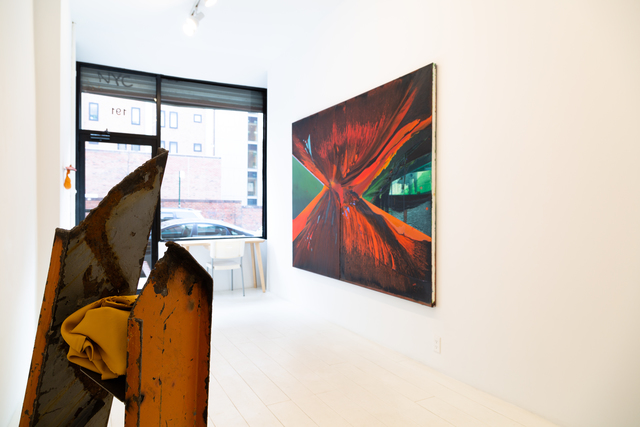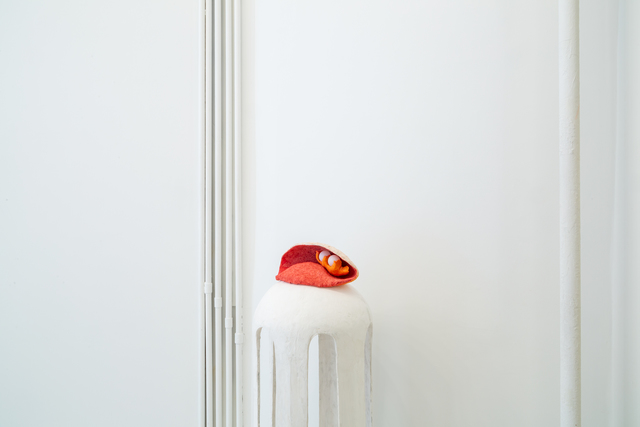
Beatrice Modisett, Every Ninth Wave II, 2018, oil on canvas, 70 x 96 inches
Implied Body
Curated by Emily Alesandrini
Featuring Yan Cynthia Chen, Beatrice Modisett, Tariku, Shiferaw and Kennedy Yanko
December 8, 2019 – January 12, 2020
Opening Sunday, December 8, 6-8 pm
Much of the current conversation on identity and contemporary art is exclusively focused on figural representation—the human form as it relates to race, gender, sexuality, class, etc. But what of artists grappling with these same subjects in a less literal, more symbolic mode of creation? Though abstract in nature, these works nonetheless index their maker’s physicality and imply all the nuanced complexities of that artist as an individual. Through color, gesture, form, material, process, and title, these works visualize their makers’ lived experience and implied body.
Yan Cynthia Chen (Bronx, Queens) abstracts the forms of once-functional container materials such as egg cartons, ice cube trays, and webbed cushioning surrounding imported Asian produce, creating structures that resonate with the human skeleton, guts, or an anatomical architecture. The work prompts consideration of an internalized identity as it relates to cultural and familial connections to the foods we consume. The artist’s standing sculpture, Diplomatic Language, denotes an attempt at translation or an experience of “trying to select words carefully to avoid unfavorable interpretation”, explains Chen. Small white spheres, reminiscent of teeth or perhaps pearls, suggest something precious though unattainable, resting protected and vaguely threatening in the clam-like opening. Guttural, bodily, and delicate, the sculpture Untitled (Decoy) displays three almonds nestled within a dyed paper case atop a hanging, dually-bulbous, orange form.
Beatrice Modisett (Queens, Brooklyn) works on mammoth canvases, layering and leveeing oil paint like geological and water erosion on and into the earth’s surface. Her practice reflects the continuous evolution of both individual identity and the topographical landscape of the planet.
After over a decade, Modisett returned to the Connecticut farm of her grandparents (one of the first landscapes she explored independently as a child) to create a series of abstracted charcoal and wood ash drawings made from burnt materials collected onsite. Complementing the subtlety of the sketch, her fiery, herculean canvas, Every Ninth Wave II, reveals a rigorous attention to visual layering and reflects the artist’s highly physical painting practice. The work’s title echoes a sailing folklore that warns of the stealth power and strength of every ninth wave in the sea.
Raised in Los Angeles and living in New York, Tariku Shiferaw (Bronx, Harlem) works in acrylic, spray paint, iridescent film, plastic, and wood to create bold, linear gestures with culturally-loaded color pallets and titles. In reflecting on the power and memory of mark-making, the artist critiques the institutional erasure of “other” marks and those who make them. Shiferaw’s sculptural piece, King Kunta (Kendrick Lamar), hangs high from the wall like a cloak, robe, or garment of regalia. Marked with his signature painted lines, the work alludes to both rapper Kendrick Lamar’s 2015 song and the man Kunta Kinte, a character from Alex Haley’s 1976 novel Roots. In the novel, the following HBO miniseries, and numerous subsequent pop cultural references, Kunta Kinte’s right foot is cut off by enslavers as punishment for his many escape attempts and acts of rebellion. Shiferaw’s Lights On (H.E.R.) indexes the erotically empowering R&B song by vocalist H.E.R., whose lyrics provide an alternative framework to Lamar’s in their normalization of the Black body’s existence in everyday life. The painting itself marks a departure for the artist into the new mixed media of iridescent film and cut canvas, the lines revealing a heightened dimensionality and optical illusion.
Sculptor Kennedy Yanko (Brooklyn) employs metal from scrap yards and construction sites in combination with poured “paint skins” to create vibrant, layered, and commanding forms. Altering the structure of found objects, Yanko prompts viewers to reevaluate distinctions between visual expectation and actual perception in pursuit of a more authentic awareness. Anchor IV, a new piece created for this exhibition, utilizes a repurposed dig shank (an object of labor and construction) paired with a vivid yellow paint skin to explore sensation and abstraction within the domain of commonplace materials. Two-Toned, with its monochromatic paint palette, represents an exercise in aesthetic restraint and reflects Yanko’s strategy of disused, found objects serving as a framework for paint skins. Both pointing skyward and pouring onto the floor, the work (and its title) perhaps hint at the dualities of existence, experience, or a double consciousness.
Together, the works in Implied Body create a muscular, minimalist, and jewel-toned exhibition. From car oil to ping pong balls, elements of the pieces on view reflect inventive manipulations of material and diversity of medium. Interplay between the work and architectural features of the space, such as boiler pipes and crusty cement beams, situates the painting and sculpture comfortably amid the textures and layers of the Lower East Side. We hope the exhibition conveys the power and potential of abstract work to speak to the complexities of the human condition.



